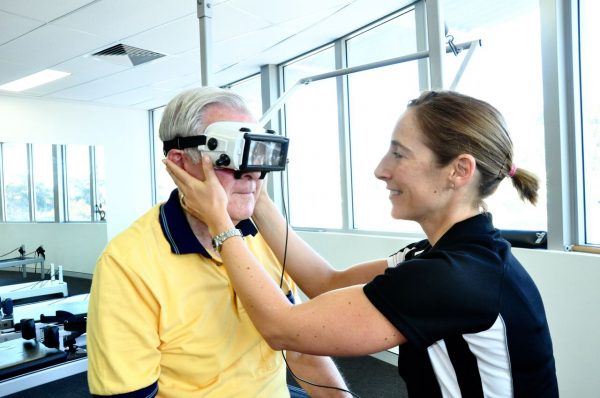Vestibular
Balance Physiotherapy is Perth based and focuses on vestibular assessment and rehabilitation.


Balance Physiotherapy is Perth based and focuses on vestibular assessment and rehabilitation. Vertigo, dizziness, spinning, unsteadiness, rocking, drifting, falling, tilting, poor balance, blurred vision, nausea and anxiety are all sensations that maybe caused by a problem in the inner ear and are conditions that we specialise in treating.
During your appointment at Best Balance Physiotherapy we will discuss the nature of your symptoms and the impact they are having on your life. An in depth assessment will be performed to determine the cause of your symptoms. Following the assessment, a customised treatment plan will be developed and implemented. A Doctor’s referral is not required prior to your appointment. In some cases, it may be recommended that in addition to physiotherapy treatment a further medical review with a doctor is needed.
For more information see our website at https://www.bestbalancephysio.com.au/ or to book an appointment call (08) 9245 1011
What is Vestibular Rehabilitation Therapy?
The vestibular apparatus is a small structure located in the inner ear that is important for balance. People with vestibular disorders often experience debilitating symptoms including dizziness, vertigo, nausea, fatigue and problems with vision and balance. These symptoms are often accompanied by secondary symptoms including reduced strength, loss of range of motion, and increased tension (particularly in the neck and shoulder region), usually resulting in muscle fatigue and headaches.
Vestibular Rehabilitation Therapy (VRT) is a specialized form of therapy that encourages the central nervous system to compensate for the inner ear deficit that may be causing dizziness or problems with balance.
VRT can help with a variety of vestibular problems, including:
Even people with long-term, unresolved inner ear disorders who have undergone a period of medical management may still benefit. VRT can also help people with an acute or abrupt loss of vestibular function, for example, following surgery.
Benign Paroxysmal Positional Vertigo (BPPV)
Benign Paroxysmal Positional Vertigo (BPPV) is a very common cause of vestibular dysfunction. Miniscule particles called otoconia move into an area of the vestibular system where they don’t belong and trigger quite debilitating vertigo and dizziness. If this is found to be the cause of symptoms during the assessment, physiotherapy treatment may involve a specialized form of VRT called a canalith repositioning procedure, often referred to as the Epley maneuver. Research shows that the repositioning manoeuvre works to significantly improve symptoms on the first effort, 80-90% of the time.
VRT Assessment
 To begin with, the physiotherapist will complete a thorough assessment that includes:
To begin with, the physiotherapist will complete a thorough assessment that includes:
VRT Treatment
Following assessment, a treatment plan is developed comprising of head, body and eye exercises that retrain the brain to recognize and process signals from the vestibular system, and coordinate them with information provided by our sensory system (vision and proprioception (joint position sense)). The aim is to desensitize the balance system to movements that provoke symptoms, and increase home-based activities and exercise in order to strengthen muscles, regain confidence and improve overall fitness.
Some of the exercise and activities may at first cause an increase in symptoms as the body and brain attempt to sort out the new pattern of movements. However, in most cases balance improves over time if the exercises are correctly and consistently performed. Muscle tension, headaches, and fatigue will diminish, and symptoms of dizziness, vertigo, and nausea will decrease or disappear. Often, VRT is so successful that no other treatment is required.